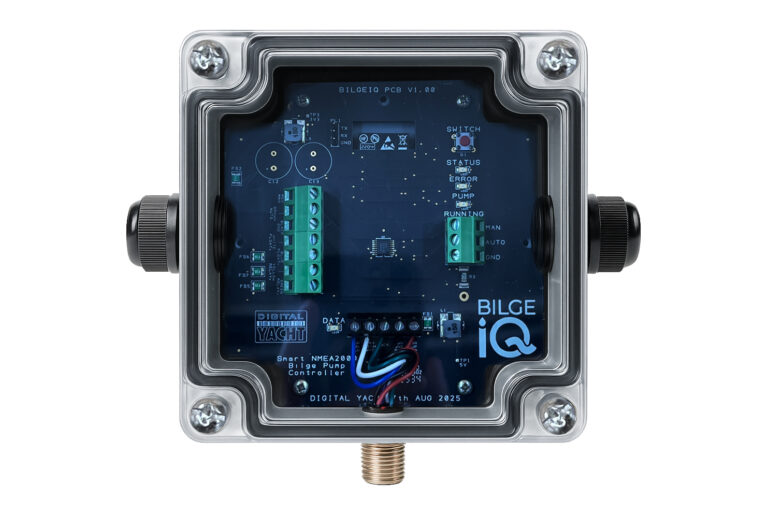
oil change 368
Years ago, a well-known manufacturer of oil filters used a catchy slogan that went something like this: “Pay a little now or a lot later.” In other words, pay a few bucks for one of their oil filters or big bucks for a major engine repair.
Changing the oil in an engine-whether it’s in your boat, car, lawnmower, or any piece of equipment that uses an oil sump-and doing it on a regular basis is probably one of the easiest and least expensive ways to extend a motor’s life and improve its reliability. Even though we’re sailors, most of us like the idea of having an engine that will work properly whenever we call upon it to provide propulsion or to charge our batteries.
And changing the oil is just the beginning of the steps you can take to keep Old Reliable chugging along. In my role as the manager of a busy boatbuilding and repair yard, I see the mechanical failure of a lot of marine diesel engines-and all too often, what I see aren’t deaths in old age due to the accumulation of wear and tear but rather premature demises caused by poor maintenance practice.
Preventing inevitable mechanical failures is relatively straightforward: It’s a case of knowing your enemy. Over the coming months, I’ll help you get acquainted with “the enemy” by discussing the various mechanical systems at work in the engine room and explaining the care and feeding they need to remain healthy. I hope this will lead you back to the pages of the relevant owner’s service and parts manuals for your engine; service manuals can be obtained new from the engine dealer or online at one of the used-book websites (such as www.abebooks.com). Then, armed with a basic tool kit, you should be able to undertake most, if not all, of the maintenance tasks I’ll delve into in coming issues.
Task One: The Oil Change
There are a number of reasons why you should change the oil in your vessel’s propulsion engine. As you operate your motor, the lubricating oil gradually wears out. Initially, it becomes dirty or contaminated with combustion byproducts. With each compression, power, and exhaust stroke of each cylinder, gases and liquids, albeit in small quantities, slip by the piston rings and into the crankcase, where the lubricating-oil reservoir is located. These byproducts include unburned fuel, soot, and water (water is one of the byproducts of burning fossil fuels); their presence is cumulative, and they ultimately contaminate the oil. The deep-black color that characterizes most diesel-engine lube oil after it’s been used for just a few hours is the result of soot, a byproduct of the combustion process. The soot is abrasive and thus harmful in and of itself. But it also thickens the oil, making it sludgy, which prevents it from traveling into the close tolerances between the moving parts it lubricates. Additionally, the water mixes with the sulfur in the fuel to create sulfuric acid, a compound that will attack polished metal surfaces inside the engine, such as bearings and journals. Oil wears out and ages in several other ways, but you shouldn’t need any more reasons to replace it beyond those I’ve mentioned.
Begin your oil-change regimen by obtaining the proper filter and oil. The weight of the oil you use-10W30, 15W40, or a straight 30- or 40-weight, for instance-will be determined by the ambient operating temperature. Consult your operator’s manual for guidance. Nearly all diesel engines call for a grade of oil with a “C” prefix, such as CF or CH (the C stands for “commercial,” but I prefer to think of it as representing “compression,” the type of ignition a diesel engine utilizes). The second, or suffix, letter denotes the sophistication of the additives. Again, check your owner’s manual to determine what’s called for. Typically, it’s safe to use oil with a suffix letter that comes later in the alphabet than what’s recommended, but not one that comes earlier.
After collecting your materials, you’ll then need to warm up the engine. This does two things: It thins the oil so it’s easier to pump, and it gets the soot, dirt, and debris into suspension in the oil so that material can be pumped out with the oil. Diesel engines tend to run cool unless loaded (that is, driving the boat), so you may have to run your motor in gear for a while to warm the oil sufficiently. Remember, the temperature gauge, if you have one, indicates the temperature of the coolant, not the oil.
Once the oil is warm, it’s ready to pump. Some marine auxiliary diesels are equipped with a hand-operated, permanently installed crankcase-oil pump. If your engine has one of these, consider yourself lucky; they’re a nice touch, but they’re regrettably rare. If your engine doesn’t have one, you can obtain a portable engine oil pump at most marine chandleries. I prefer the ones that generate a vacuum by pumping; they resemble a bicycle pump, as opposed to the electric models.
Shut the engine down and let it sit for five or 10 minutes to allow as much of the old oil as possible to drain back into the pan. Pump the old oil out either through the purpose-made hose that’s attached to the oil drain plug on many engines (don’t forget to replace the cap on this hose and tighten it well when you’re finished) or through the dipstick tube, then dispose of it properly. Many marinas and boatyards have facilities for accepting used oil, as do local municipal recycling centers. Remove the old oil filter-you may want to wear disposable rubber gloves for this part, and it may require a filter or strap wrench-and place it in a resealable plastic bag for proper disposal. Oil filters can often be disposed of at the same location as the oil. Be prepared for drips and have an absorbent pad in the bilge.
If your filter is horizontally mounted, it’s tough to avoid spilling some oil. Oil filters are like screws: They’re turned counterclockwise for removal and clockwise for installation. Make sure the rubber gasket comes off with the old filter. Lubricate the gasket on the new filter with clean oil, then screw the filter into place. It should be installed hand tight and snug; there’s no need to use a wrench. Finally, add oil to the crankcase until it reaches the “full” mark on the dipstick; check your owner’s manual to determine the correct capacity. Then start the engine, and make sure oil pressure is generated either by watching the gauge or by ensuring that the alarm stops sounding-you have a functioning low-oil-pressure alarm, right?-after no more than three to five seconds. Provided you have oil pressure, allow the engine to run for two or three minutes. Shut it down and check for leaks around the filter. After waiting a few minutes, check the dipstick a couple of times; you’ll probably have to add a little bit of oil because you’ll have filled the oil filter by running the engine. (Remember all that oil that spilled out of the filter when you removed it? Well, it has to be replaced.)
If you treat your diesel to an oil change every 100 hours or once a season, whichever comes first, you’ll be rewarded with reliable performance from the parts you can’t see-the ones inside the engine.
Steve D’Antonio is a regular Cruising World contributor who offers services for vessel owners, boatbuilders, and others in the marine industry through Steve D’Antonio Marine Consulting (www.stevedmarineconsulting.com).








